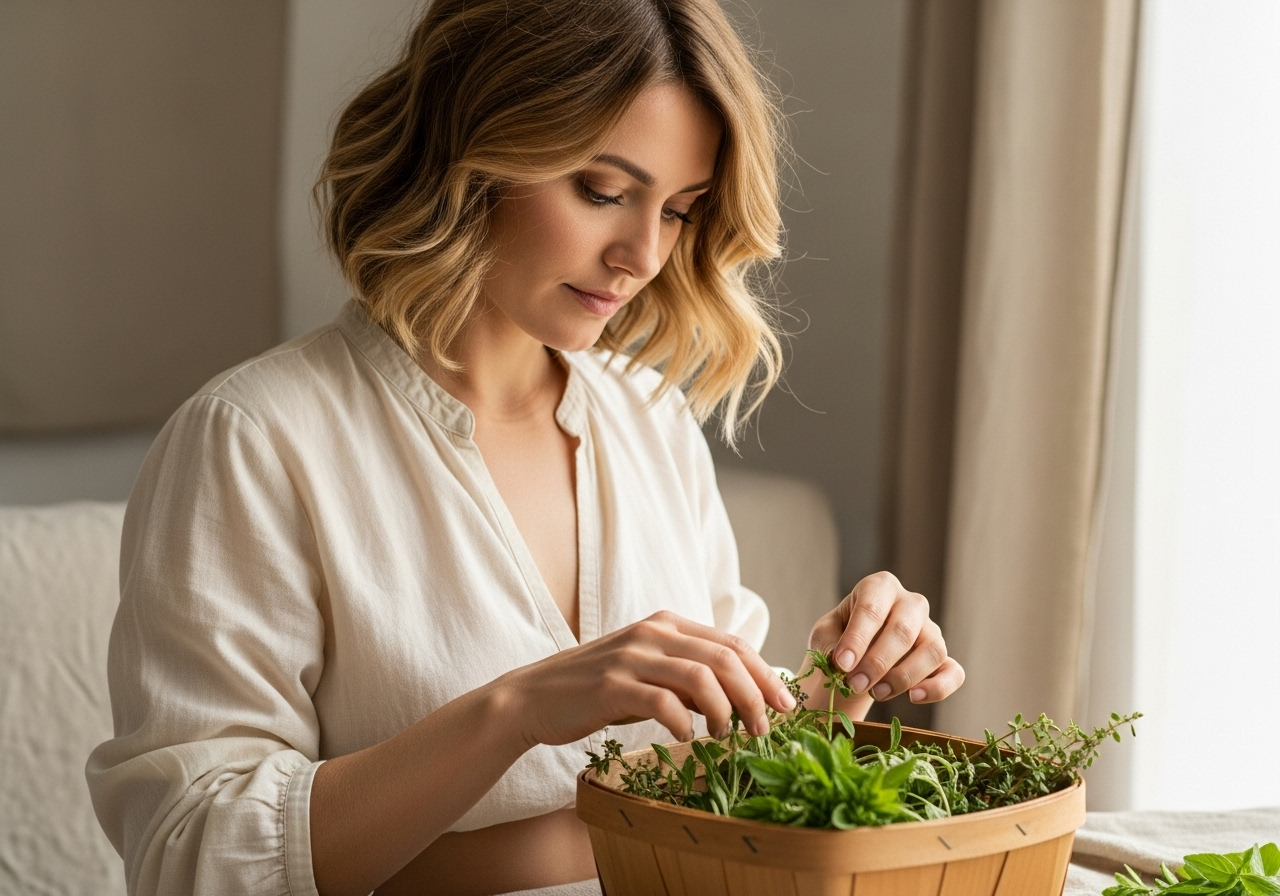Category: Health | 9 min read
Fermentation Magic: How I Healed My Family's Gut Health
The ancient art of fermentation brought healing to our digestive issues and transformed our kitchen into a bubbling laboratory of beneficial bacteria.
By Admin
Published: 3/16/2025

The jar of sauerkraut sitting on my counter is alive. It bubbles gently, releases tiny puffs of gas, and smells increasingly tangy as beneficial bacteria work their ancient magic. A year ago, this would have terrified me. Now, it represents one of the most important discoveries our family has made about health and healing.
Our journey into fermentation began out of desperation. My husband had been struggling with digestive issues for years—bloating, irregular bowel movements, and general discomfort that doctors couldn't seem to address beyond prescribing various medications. My youngest daughter had eczema that flared with certain foods, and I was dealing with recurring yeast infections despite multiple rounds of antibiotics.
Then I learned about the gut microbiome and realized we'd been approaching these problems all wrong. Instead of trying to kill bad bacteria with medications, we needed to strengthen the good bacteria that support our health. Fermented foods, I discovered, are one of the most powerful ways to do this.
I started cautiously with store-bought kombucha and kefir, but the expense added up quickly. A single bottle of high-quality kombucha costs $4-6, and we were drinking it daily. I realized I needed to learn to make these foods myself, both for our budget and for our health.
My first attempt at sauerkraut was laughably amateur. I didn't understand proper salt ratios, didn't keep vegetables submerged under brine, and panicked when I saw the white film (kahm yeast) that naturally forms on the surface. That first batch went into the compost, but I was determined to learn.
The breakthrough came when I connected with a local fermentation group. Learning from experienced fermenters taught me that successful fermentation is about creating the right environment for beneficial bacteria to thrive. Proper salt concentration, anaerobic conditions, and patience are the keys to success.
Within a few months, our kitchen was transformed. Mason jars of fermenting vegetables lined the counter. Kombucha SCOBYs floated in sweet tea, slowly converting sugar into beneficial acids and probiotics. Water kefir grains bubbled away, creating fizzy probiotic drinks that my children preferred to soda.
The health changes were remarkable. My husband's digestive issues improved dramatically within six weeks of regular fermented food consumption. His energy increased, his mood stabilized, and his chronic bloating disappeared. My daughter's eczema cleared up completely once we healed her gut with fermented foods and eliminated the inflammatory foods her system couldn't handle.
I learned that fermentation is about much more than probiotics. The fermentation process pre-digests foods, making nutrients more bioavailable. It creates new nutrients that weren't present in the original ingredients. Fermented vegetables often contain higher levels of vitamins than their fresh counterparts.
The children became fascinated by the process. They learned about beneficial bacteria, watched vegetables transform into tangy treats, and began to understand that not all bacteria are bad. They started asking for "pickle juice" (sauerkraut brine) when they felt stomach upset and choosing kimchi over chips for snacks.
I discovered that almost any vegetable can be fermented successfully. Carrots become sweet and tangy. Beets turn a gorgeous deep red and develop complex flavors. Green beans maintain their crunch while gaining probiotic power. Even fruits can be fermented into healthy sodas and condiments.
The economic impact was significant. Making our own fermented foods costs pennies compared to buying commercial versions. A head of cabbage that costs $2 can become several jars of sauerkraut worth $30-40 in stores. The savings allowed us to invest in higher-quality ingredients and equipment.
Fermentation connected us to food traditions from around the world. We learned to make Korean kimchi, German sauerkraut, Eastern European beet kvass, and Central American curtido. Each culture has developed fermented foods suited to their climate, available vegetables, and health needs.
The process taught patience and acceptance of natural timelines. Fermentation can't be rushed—it happens on its own schedule, influenced by temperature, season, and the mysterious workings of microbial communities. This slower pace became meditative and grounding in our fast-paced world.
I learned about the connection between fermented foods and mental health. The gut-brain axis means that improving digestive health often improves mood, anxiety, and cognitive function. Our family's overall emotional resilience seemed to improve along with our gut health.
Troubleshooting fermentation failures became part of the learning process. Mushy vegetables taught me about proper salt ratios. Off flavors led to discoveries about water quality and container choices. Each failure provided knowledge that made future batches more successful.
The social aspect of fermentation surprised me. Sharing extra SCOBY cultures and fermented vegetables with neighbors created community connections. Teaching fermentation workshops became a way to spread knowledge about this powerful health practice.
I began to understand fermentation as a metaphor for health itself—creating conditions where beneficial processes can thrive while naturally crowding out harmful ones. This philosophy extended beyond food to other areas of life, encouraging positive habits that naturally diminish negative ones.
Our medicine cabinet now includes fermented foods as primary treatments for digestive upset, immune support, and general health maintenance. A spoonful of sauerkraut juice works better than commercial probiotics, and it costs virtually nothing to make.
The confidence that comes from being able to create medicine in your own kitchen is empowering. We're no longer dependent on expensive supplements or commercial products for basic health support. Our fermentation skills have become a form of food security and health independence.
A year later, fermentation has become as routine as cooking. The bubbling jars on our counter represent more than just food—they're symbols of our family's commitment to working with natural processes to create health and vitality from simple, whole ingredients.